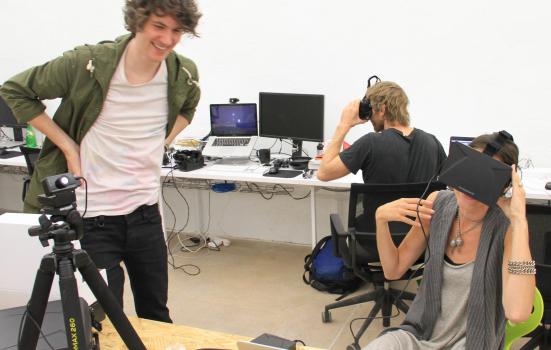An established brand has helped arts organisations increase engagement and fundraise. But how do you begin developing a brand? Kirsten Abildgaard offers her tips.

Five years ago Superbrands top 100 of the UK’s strongest consumer-facing brands featured the likes of Coca-Cola, Google and Rolex, but in the midst was also a cultural institution: Tate at 41. Many feel that cultural organisations can’t be or shouldn’t be ‘brands’, but the reality is that they have been for a long time now.
Having a clear vision alongside a guide for decision-making gives you a tool for making forward-thinking, strategic and sometimes risky decisions
A brand as a concept is much more than a logo. It is how audiences perceive an organisation, their expectations and memories and the entire emotional relationship. We are more brand-savvy than ever and we select experiences, products and services based on personal beliefs and aspirations, consciously or subconsciously. This seems inevitable in a society with so much choice – just take a moment to consider what device you are reading this article from and why.
External perceptions
Once a cultural organisation recognises this, it will benefit from increased audiences, more income and a bigger reputation. In order to manage these external brand perceptions, you need to develop a brand strategy encompassing these ideas:
- What you do (offer)
- How you do it (values)
- Where you want to get to (vision)
- Why you do it (purpose or mission – the impact you want to have)
The concepts contained in a successful brand strategy should be flexible enough to adapt to a changing environment, yet distinctive enough to establish your position with new partners, for new audiences, in new locations.
An example of a flexible but effective vision is the British Museum’s: The museum for the global citizen. This vision allows for successful physical exhibitions as well as its ground-breaking digital experience, Museum of the World, which has been made in collaboration with Google.
Digital offers so many opportunities, but deciding what to focus on and who to partner with can be so overwhelming that many cultural institutions never manage to get the wheels in motion. Having a clear vision alongside a guide for decision-making gives you a tool for making forward-thinking, strategic and sometimes risky decisions, such as venturing into uncharted digital territory.
Internal engagement
Once the brand strategy has been established, the hard work begins. Staff must feel enthusiastic about reaching the future vision. Every decision should add to a coherent voice and a confident attitude, rather than what can be perceived as random, individual events. Empowering staff to make decisions using the brand strategy creates a more dynamic, resourceful and happier place for both visitors and staff, ultimately creating a powerful perception of the organisation in the minds of audiences and visitors.
In 2014 the Minneapolis Institute of Art (MIA) went through a brand-defining process that focused heavily on internal engagement. The focus paid off and resulted in 50% more visitors, proving that brand must come from the inside, because ultimately it is people who create and deliver the experience.
As many of us now recognise, cultural organisations can no longer rely on their impressive buildings to reflect their brand. Instead, the focus has to be on immersive experiences and strong digital offers, all requiring ideas generation and execution from a confident, creative workforce.
In spite of this strong case for developing a clear brand strategy from the inside out, it is surprising how many major cultural organisations have never answered the questions above, in particular ‘why they do it’, which forms the emotional heart of an organisation. Why is your organisation special and why should audiences want to engage with you?
Success in New York
When the New Museum in New York opened its doors in 2007 all eyes were upon it. How could it possibly stand out in an already saturated market with MoMA, Guggenheim, The Whitney and the MET all within five miles?
It developed a clear brand strategy. Using ‘a catalyst for contemporary art’ and the values ‘open, fearless and alive’ as its mantra, it is responsive and agile. Initiatives like the pioneering NEW Inc, the world’s first museum incubator, blurs the lines between art, business and technology.
New Museum is also a successful fundraiser, currently more than half way to fundraising $80m for a huge expansion. The fundraising is values-led with a message that not only is art celebrated, but it’s alive and happening right there in the New Museum. Most impressive of all, the fundraising for more space is happening without any clear future plans for that space: “I don’t have it completely laid out’, said Lisa Phillips, its Director.
Fundraising $80m on your brand’s goodwill value and reputation for innovation is a clear demonstration of some of the many benefits of a clear brand strategy. It is moving with the times, maintaining audience interest and demonstrating value to funders.
Kirsten Abildgaard is Creative Researcher & Consultant at Jane Wentworth Associates.
www.janewentworth.com
Tw: @JWALondon




